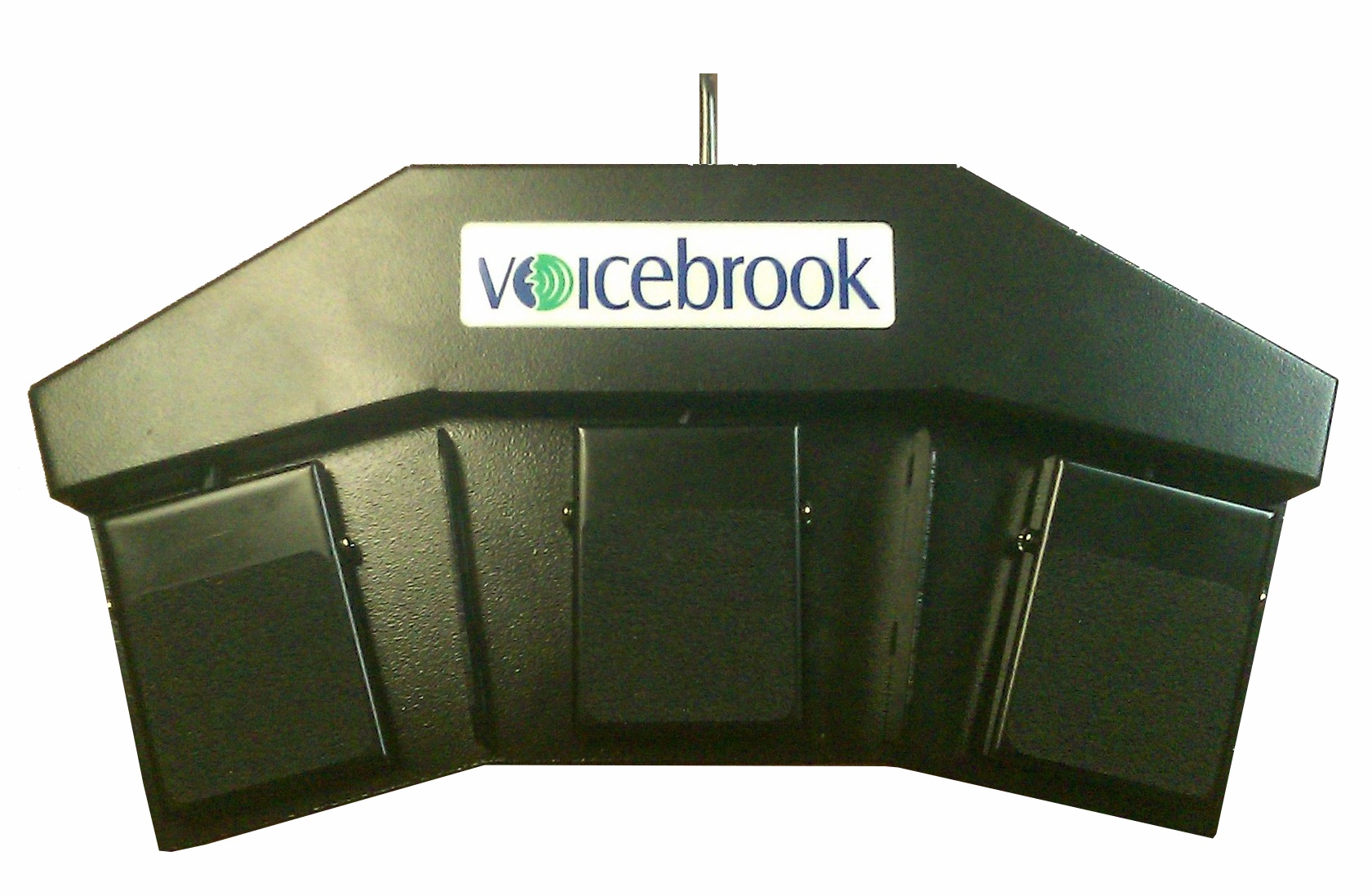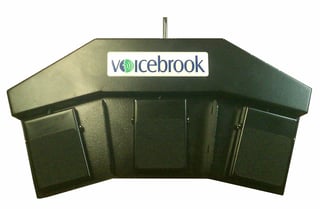2 min read
With Speech Recognition, Even the Hardware is Customizable
Voicebrook Friday May 27, 2016

When someone offering a speech recognition tool makes a reference to "hardware," he or she is referring to the physical tools such as microphones and foot pedals. Several hardware and accessory choices are available when implementing your solution. What some people may not realize is that there are different options to cater to personal preference. With the foot pedal, some users may like to tap the pedal to begin dictating, while others like to hold the pedal down for the duration of their dictation. Like speech recognition software, the foot pedal is customizable. Here are a couple options to consider:
 Why use a foot pedal?
Why use a foot pedal?
Foot pedals are tools used to control your microphone while allowing your hands to be free. They may also be used to help you navigate through fields in a templated report. All of the foot pedals used with VoiceOver have three pedals. The middle foot pedal is typically used to turn the microphone on and off while the left and right foot pedals are configured differently based on user preference.
Tap-to-Talk vs. Hold-to-Talk
When we configure the foot pedals for dictation users, we offer two options for turning the microphone on and off. The first allows you to “tap” the middle pedal which will activate the microphone and allow you to dictate. Then, to turn off the microphone, you can “tap” the pedal again. This option is called "Tap-to-Talk."
Pros:
- Eliminates the need to continually hold down the foot pedal while speaking
- Easier to use the left and right foot pedals because the user’s foot is free while dictating
Cons:
- Potential for unintended dictation - we often see users forget to turn off their microphone before answering the phone or carrying on a conversation. This extra speech may be transcribed and will need to be removed
Our standard when initially configuring the foot pedal for users is the second option. We refer to this as "Hold-to-Talk." It allows you to press and hold the middle pedal to activate the microphone and dictate. When you are finished, simply lift your foot off the pedal and the microphone will turn off.
Pros:
- More intuitive, as most dictation/transcription systems function similarly
- Users have more awareness to whether the microphone is on or off lessening the likelihood of unwanted text in the report
Cons:
- Pressing the pedal too early and/or letting the pedal go too soon can cause recognition issues - often we see users start to speak before the foot pedal is fully depressed, causing the first word to be missed. The same happens when users let go of the foot pedal prematurely.
Most users start with the Hold-to-Talk option before deciding what works best for them.
What about the left and right pedals?
The right foot pedal is commonly configured to advance to the next variable in a template. This option gives you an alternative to saying the “Next Item” command, and it works best for navigating templates that contain multiple variables. It pairs well with the Tap-to-Talk method. Simply tap the middle pedal to turn the mic on, dictate freely, and press the right foot pedal to move through variables as you continue to dictate. This function is also popular among those that use our CAP content in the Structured Results Entry module (SRE). It allows you to quickly tap through optional questions instead of using the mouse or saying “Next Item” over and over.
The left foot pedal can be used for application functions such as “undo” or “print." As long as there is a keystroke combination to carry the function out, the foot pedal can be programmed to do so. Get creative!
Have any other questions about foot pedals or any other hardware? Let us know!


